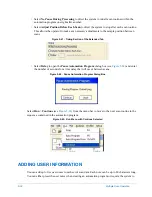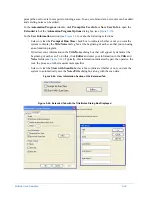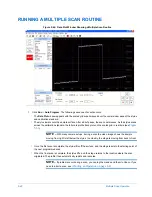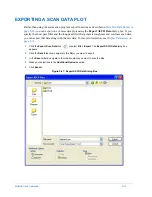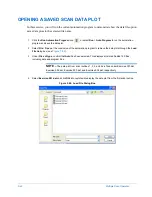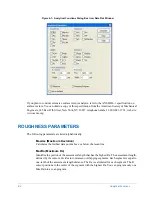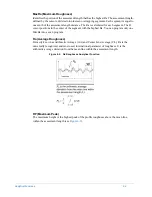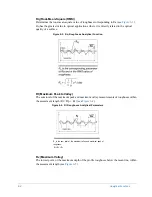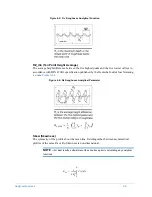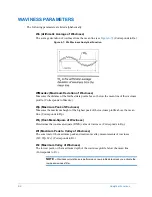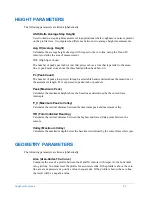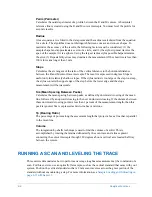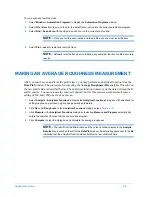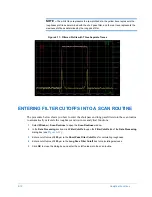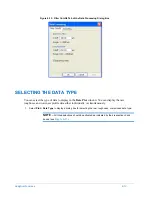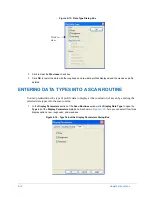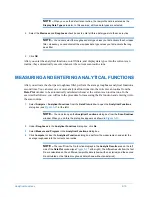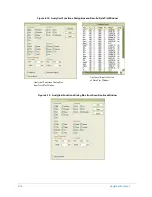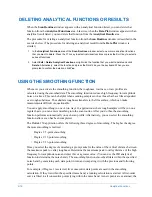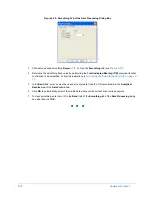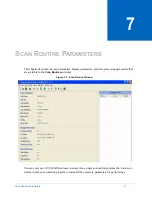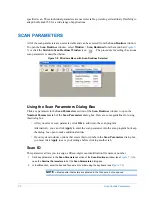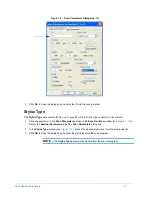
6-8
Analytical Functions
Perim (Perimeter)
Calculates the outside perimeter of a profile between the R and M cursors. A horizontal
reference line is created using the R and M cursor intercepts. You must level the profile for
accurate results.
Radius
A least-squares-arc is fitted to the data points and the radius is calculated from the equation
for a circle. The algorithm does not distinguish between concave and convex shapes. To
maximize the accuracy of the results, the following factors must be considered: (1) the
sample shape must approximate a sector of a circle, and (2) the stylus tip must traverse the
apex of the sample if it is a sphere. Using the largest radius stylus possible helps minimize
the error. (3) Repeatability errors may dominate the measurement if the chord rise is less than
100Å for scans longer than 1 mm.
Slope
Calculates the arc tangent of the ratio of the vertical distance to the horizontal distance
between the R and M cursor/trace intercepts. The result is expressed in degrees. Slope is
useful only for relatively shallow slopes. If the stylus radius is too large or the step too steep,
the stylus contacts the upper edge of the step before the lower edge and the slope
measurement will be inaccurate.
Sm (Mean Spacing Between Peaks)
Calculates the mean spacing between peaks, as defined by downward crossing of the mean
line, followed by an upward crossing to the next downward crossing. If the distance between
these downward crossing points is less than 1 percent of the measurement length, then this
peak is ignored. Sm is expressed as micro-inches or microns.
Tp (Bearing Ratio)
The percentage of points along the assessment length that project above a line that is parallel
to the mean line.
Volume
The integration-by-shells technique is used to find the volume of a solid. This is
accomplished by rotating the lamina delineated by the scan trace and a line segment
connecting the cursor intercepts through 180 degrees about a vertical axis located half way
between the cursors.
RUNNING A SCAN AND LEVELING THE TRACE
This exercise demonstrates how to perform an average roughness measurement at the conclusion of a
scan. For this exercise, use an optically flat sample, such as the vertical standard that came with your
system. Position the vertical standard so that a 2 mm scan traverses across the glass portion of the
standard without encountering a step. For more information, see
Summary of Contents for Dektak 150
Page 1: ......
Page 7: ......
Page 17: ......
Page 81: ......
Page 105: ......
Page 149: ......
Page 191: ......
Page 251: ......
Page 257: ...A 6 Facilities Specifications Figure A 6 Dektak 150 without Enclosure Side View ...
Page 258: ...Facilities Specifications A 7 Figure A 7 Dektak 150 Dimensions without Enclosure Top View ...
Page 259: ...A 8 Facilities Specifications Figure A 8 Dektak 150 without Enclosure Center of Mass ...
Page 273: ......
Page 283: ......
Page 321: ......
Page 331: ......
Page 333: ......
Page 336: ......
Page 337: ......
Page 349: ......

